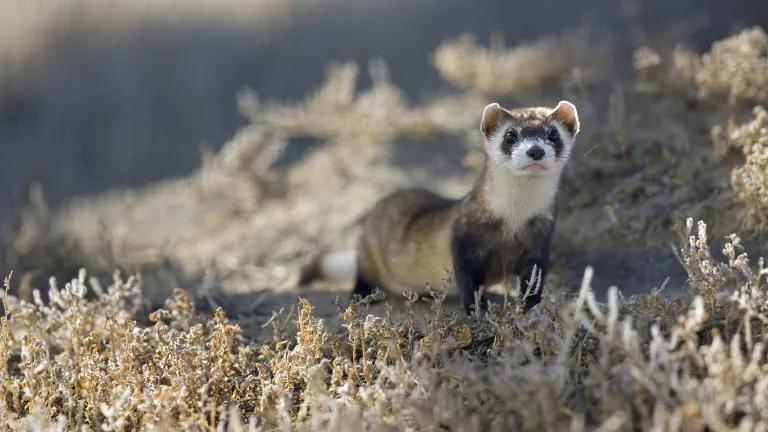Trump finds new ways to abandon endangered species and ignore climate change

The Trump administration has finalized a rule that undermines the Endangered Species Act (ESA) by preventing the U.S. Fish & Wildlife Service (FWS) from proactively protecting wildlife habitat that is shifting due to climate change.
Every endangered species is facing its own unique set of threats to its survival—from habitat destruction to overhunting to invasive competitors—but climate change is threatening biodiversity on a scale unlike the others. The climate crisis is already harming at least 700 species, including approximately half of the world’s endangered mammals and a quarter of its endangered birds. Appearing on this list are keystone species like bees, beavers, and wolves, along with other charismatic wildlife, such as gorillas, elephants, and snow leopards. According to a 2019 study, the outlook for U.S. wildlife, in particular, is very dire, with climate change threatening nearly all of the country’s 459 endangered species.
Under the new rule, when considering habitat protection measures, the U.S. Fish and Wildlife Service may only include areas that can currently support the species—not places where it will need to move to as climate change advances. Also excluded are areas in need of restoration before listed species could live there. The rule is utterly nonsensical. Climate change has already shifted the habitats of countless species, from mosquitoes to marine invertebrates. Migrating in response to climatic shifts is what plants and animals do a lot—and it’s going to happen more and more as sea ice continues to melt, temperatures and seas continue to rise, and species adapt (or don’t) to the changes happening around them.
The lands and waters surrounding endangered species’ historic ranges are potential escape routes—to higher, cooler, safer, or more fertile ground. If we don’t protect them, already struggling species will be caught in a vice between an inhospitable climate and inhospitable development.
Speaking of which, Trump’s FWS also published a rule that tips the balance in favor of developers (like Trump) by placing more emphasis on economic factors (rather than scientific ones) when making critical habitat designations. And the FWS’s recent decision declining to award protections for the northern spotted owl, which has lost 70 percent of its woodsy home in the Pacific Northwest to the timber industry, is yet another action revealing how little the Trump administration values biodiversity. Although the agency agrees the raptors deserve the more urgent conservation status of “endangered,” it simply won’t allocate the resources to give it to them. Sorry, owls. The monarch butterfly is getting Trump’s cold shoulder, too, as the FWS decided to classify the butterfly as a “candidate” for federal protection instead of actually protecting these iconic migrators.
In all, the Trump administration’s last-minute moves against biodiversity are bad science, bad management, and bad statutory interpretation. The ESA gives the federal government broad powers because it commits the country to the broad purpose of protecting species making a last stand. Donald Trump has once again pulled the rug out from under them.
Related Content

Trump Administration Hamstrings Ability to Conserve Wildlife Habitat

With Thousands of Species on the Brink, Trump Administration Moves to Further Dismantle the Endangered Species Act
